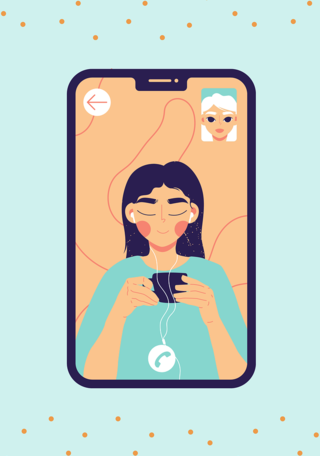Online Therapy
Telepsychology: How to Maximize Online Sessions
Tips for making online therapy more meaningful.
Posted October 18, 2020

Telepsychology, sometimes called telemedicine, has exponentially grown as a way to get psychotherapy since the onset of COVID-19.
In fact, more people are engaging in mental health treatment now than ever before, with telepsychology being the preferred choice for both therapists and patients.
In fact, reports suggest that Telepsychology has been so successful as a modality, that it may be here to stay—even post COVID-19.
Tips for Meaningful Telepsychology
Telepsychology is different than in-person sessions. With in-person treatment, your therapist has already created a secure space that offers comfort, safety, and privacy. Little or no distractions are a built-in factor in your therapist's office, as is having a set time scheduled each week for you, and a waiting room that allows you to center yourself before a session begins.
When you're involved in online therapy, there are several things you can do to recreate this environment. Here are six tips to consider.
1. Find a safe space: Choose an area in your home or apartment that offers privacy and comfort. This space should allow you to safely explore thoughts and share feelings with your therapist. For some, it may be a room away from family members: the bedroom, basement, or den. For others, it's their car. Some use the outdoors as a place to find quiet, be it walking as they talk with their therapist or a chair in the backyard. Consider earbuds or earphones not only just to hear better, but to mute the dialogue of your therapist that others might overhear.
2. Set up your phone or computer: When you're using a cellphone, desktop, or laptop to FaceTime, Skype, or access telemedicine platforms, turn off your notifications in your settings so emails, texts, updates, and other phone calls won't interrupt your session time. Your therapist is likely to have done the same.
3. Camera set-up: Once you've chosen your space and minimized phone notifications, find a secure spot for your cellphone or laptop. Do a lighting check with your camera app to make sure you can see yourself adequately. This will ensure that your therapist can see you during the Telepsychology session. Check to see if there are any visual distractions behind you, too. If so, move or reduce them—or shift yourself to create a more focused space.
4. Have a back-up "disconnection" plan: Sometimes WiFi and internet connections are unpredictable, and Telepsychology sessions freeze or are dropped entirely. Speak with your therapist ahead of time to know what to do should this occur. I like to have a landline back-up plan in case such things happen. This way, if the telepsychology session is interrupted/dropped and WiFi/internet connectivity is lost, we can resume the session old-school via telephone.
5. Make the most of your home visit: Dress comfortably, and feel free to keep some tea, coffee, or water nearby. You can even invite your pets to join you. However, don't be too distracted with snacking, tooling around your home, or fussing with other things as you want to focus on treatment. Your psychotherapy session is a special time for you. Make it a sacred space.
6. Be prepared before your session begins: Do your best to engage in a normal routine before getting ready for your online session. But, also set aside 10 minutes or so beforehand to get prepared for your scheduled appointment. When you take a few moments to be in your safe space, readying your phone/computer with muting notifications, checking the light, sound, and stability of your picture, you can then spend a few moments breathing deeply and grounding yourself. This way, when the session begins, you're fully addressing your concerns with your therapist—and not squandering precious time with space or technology issues.


